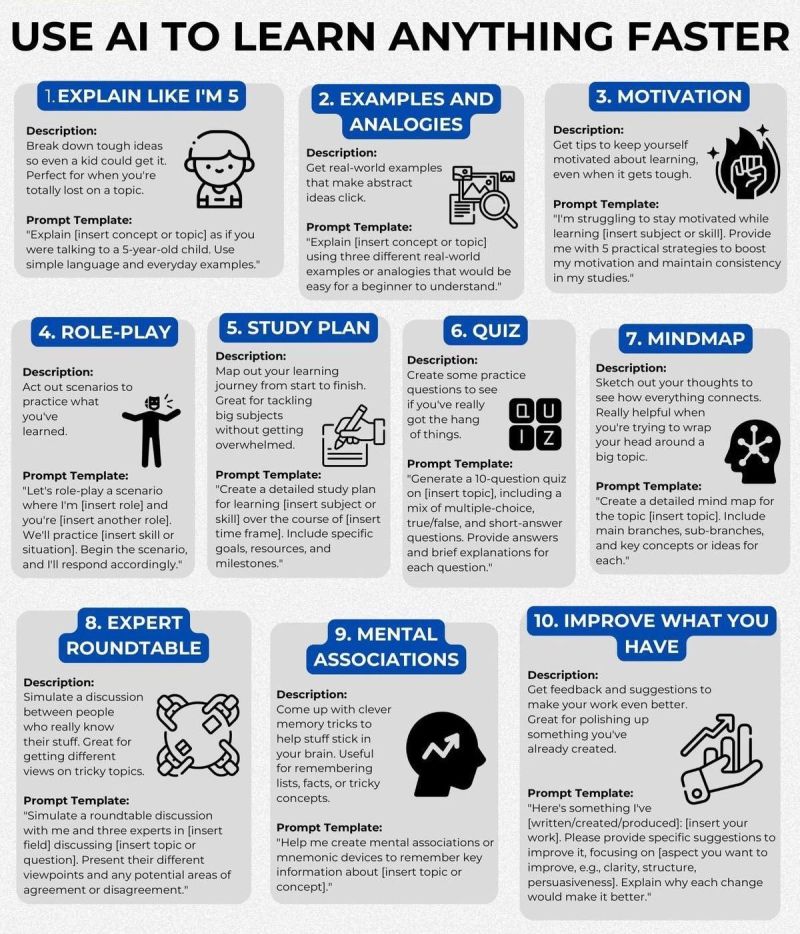5. Learn Prompt Engineering and How to Effectively Communicate with AI Tools
So far, we’ve covered AI’s magical potential (yay!), examined some of its weird quirks (hello, hallucinations!), and explored how you can leverage AI for writing, presenting, and decision-making. Now, it’s time to master the fine art of prompt engineering—a fancy term for something incredibly simple: knowing how to properly ask an AI for help.
If you’ve ever stared blankly at your AI tool, unsure how to phrase your question and feeling awkwardly like you’re on a first date with a robot, you’re not alone. Enter prompt engineering, the subtle yet powerful skill that turns vague instructions into crystal-clear outputs. Ready to communicate clearly with your new digital assistant? Great, let’s become AI-whisperers!
What is Prompt Engineering Anyway? (No, You Don’t Need a Degree in Engineering)

Despite sounding intimidatingly technical, prompt engineering boils down to carefully crafting your instructions (“prompts”) to get accurate, useful responses from AI tools like ChatGPT or Google Gemini. It’s a bit like ordering at a fancy restaurant—if you’re vague (“Bring me something tasty!”), you risk ending up with pickled squid eyeballs. But if you’re precise (“I’ll have the grilled salmon with a lemon glaze, please.”), you get exactly what you want, cooked to perfection.
Prompt engineering makes your AI interactions efficient, predictable, and useful. Master it, and you become a communication superhero. Fail to grasp it, and you’ll forever struggle with vague, irrelevant, or plain weird outputs. Let’s avoid the pickled squid eyeballs scenario, shall we?
Principles of Effective Prompt Engineering (a.k.a. How to Ask AI Nicely)
1. Be Clear and Specific—Vagueness Kills Results
AI isn’t a mind reader (yet). If you provide vague prompts, you’ll get vague answers. Instead of “Write something cool about productivity,” try “Write a funny, engaging 100-word introduction about productivity tips for busy office workers.” The more details you provide, the better your AI buddy delivers.
Real-world Example:
Vague: “Summarize the meeting.”
Clear: “Summarize today’s meeting, focusing specifically on marketing strategies discussed and the next action items for the sales team.”
2. Define Your Audience and Tone—Avoid Awkward AI Moments
Clearly state your audience and desired tone to avoid awkward mismatches. Otherwise, your AI-generated memo intended for senior executives might accidentally sound more like a teen magazine editorial.
Real-world Example:
Unclear: “Explain cybersecurity.”
Clear: “Explain cybersecurity basics in a friendly, conversational tone suitable for non-technical staff.”
💡 A bad prompt is like asking your barista for ‘coffee.’ Be ready for a surprise brew.
3. Provide Context—AI Needs Your Background Info
Context helps AI understand exactly what you need. Without it, the AI might hallucinate like your weird cousin at Thanksgiving dinner, confidently stating random “facts” about flying penguins.
Real-world Example:
No Context: “Suggest improvements.”
With Context: “Review this sales email to potential new clients and suggest improvements to make the tone more persuasive and professional.”
4. Limit Scope—Don’t Overwhelm the AI (or Yourself)
If your prompt covers too much, the AI struggles, and you’ll get confused responses. Narrow your request to specific tasks or topics.
Real-world Example:
Too Broad: “Explain marketing.”
Better Scoped: “Explain the difference between content marketing and traditional advertising in two concise paragraphs.”
5. Iterate and Refine—Polishing the AI Mirror
Prompt engineering often requires tweaking. First attempts might not be perfect (like your first pancake). Refine your prompts based on initial outputs. Iterate to improve clarity and precision.
Real-world Example:
Initial prompt: “Summarize the product launch event.” (Too general response)
Refined prompt: “Provide a 150-word summary highlighting key product features, customer feedback, and overall attendance from today’s product launch event.”
Common Prompt Patterns (Your AI Shortcut Cheatsheet)
Consider these handy “fill-in-the-blank” style prompt templates to kickstart your AI journey. Copy, paste, customize, and conquer.
For Emails: “Write a polite and professional email response declining a meeting invitation due to scheduling conflicts, but express interest in rescheduling soon.”
For Summaries: “Summarize this 5-page marketing report into five bullet points highlighting key metrics and action items.”
For Content Creation: “Write an engaging 100-word social media post promoting our upcoming sales event, targeting young professionals.”
For Brainstorming: “List 10 catchy, creative titles for a webinar about remote working best practices.”
For Troubleshooting: “Provide three clear, step-by-step solutions for common login issues reported by users of our software.”
